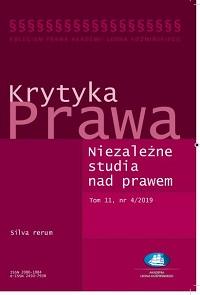Freedom of Expression of Judges within the Boundaries of Private Life: Cultural and Gender Dimensions
Nadire Özdemir
Ankara University Law School
14 (4) Krytyka Prawa. Niezależne Studia nad Prawem
DOI 10.7206/kp.2080-1084.559








